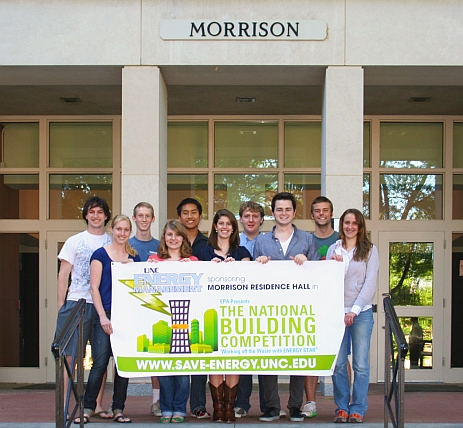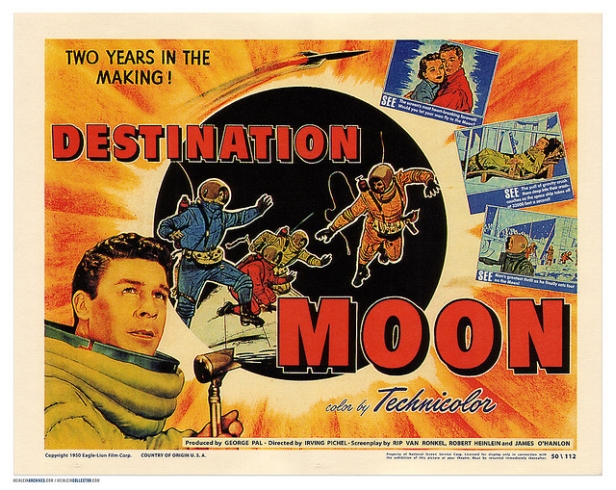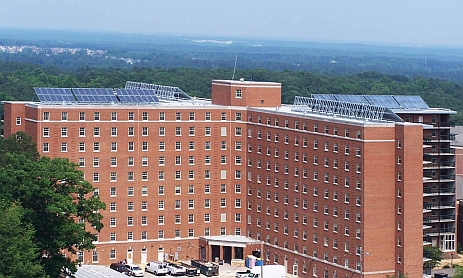 UNC Chapel Hill’s energy team: Luke Macon (from left), Annie Baer, Keith Funkhouser, Erin Hiatt, Piya Kerdlap, Hannah Sacco, Mat Smead, Steven Byrd, Sean Murphy, Eleanor Saunders. Absent: Ashley Mui, Byron Ransom, Michelle Sykes, Nick Rogoff, Mackie Price.Photo: UNCBack in April, the EPA launched a quirky little competition inspired by The Biggest Loser in which 14 buildings competed to see which could trim the most waste from their energy usage.
UNC Chapel Hill’s energy team: Luke Macon (from left), Annie Baer, Keith Funkhouser, Erin Hiatt, Piya Kerdlap, Hannah Sacco, Mat Smead, Steven Byrd, Sean Murphy, Eleanor Saunders. Absent: Ashley Mui, Byron Ransom, Michelle Sykes, Nick Rogoff, Mackie Price.Photo: UNCBack in April, the EPA launched a quirky little competition inspired by The Biggest Loser in which 14 buildings competed to see which could trim the most waste from their energy usage.
The competitors were a 23-story Manhattan office building, a San Diego Marriott hotel, a Colorado elementary school, a University of North Carolina dorm and 10 other commercial buildings. Building managers used a host of energy efficiency measures recommended by the EPA, relying largely on simple steps like weather-stripping, cleaning vents, and putting lights on sensors and timers.
And the results are in:
After a hard-fought competition, [University of North Carolina’s] Morrison Residence Hall reduced its energy use by 35.7 percent in just one year, saved more than $250,000 on their energy bills and reduced more than 730 metric tons of greenhouse gas emissions.
In a fierce competition where the final top rankings were separated by just a few percentage points, a Sears store in Glen Burnie, Maryland, came in second place with a 31.7 percent energy reduction, and a JCPenney store in Orange, California, claimed third place with energy savings of 28.4 percent. Together, the fourteen competitors reduced their energy use by more than 44 million kBtu, saved more than $950,000 in utility bills, and reduced carbon dioxide emissions equal to the electricity use of nearly 600 homes for a year. [Emphasis mine.]
What’s impressive to me is that 14 buildings saved $950,000 in heating, cooling, and electricity bills over six months. Talk about scalable — there’s no reason every other building on the planet can’t look into some of these steps and reap the financial savings.
Want to learn more about building efficiency? Of course you do. You can start with EPA’s Energy Star building section.
And to learn about how great buildings can be genuinely helpful and not just a little less bad, Living Building Challenge creator Jason McLennan has some ideas.



